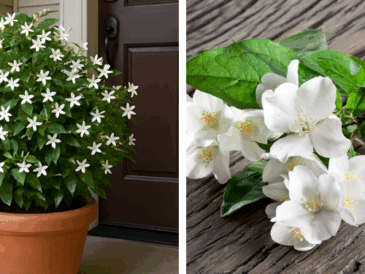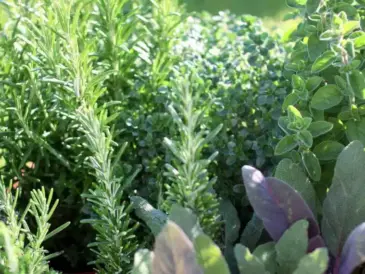As you stroll through your garden or along a sidewalk, you might notice a familiar yellow flower peeking through the cracks. Often dismissed as a pesky weed, the dandelion is frequently yanked out and discarded without a second thought. However, this resilient plant deserves a closer look for its numerous benefits and rich history.
In this article, we will explore the many reasons why dandelions should be appreciated rather than eradicated. From their nutritional value to their environmental impact, dandelions offer a wealth of advantages that are often overlooked. Let’s delve into the world of this misunderstood plant and uncover why it should be cherished rather than condemned.
1. The Misunderstood Dandelion
The dandelion (Taraxacum officinale) is often seen as an unwelcome intruder in gardens and lawns. However, this hardy plant is much more than a mere weed. Dandelions are incredibly resilient, capable of thriving in a variety of environments, from urban sidewalks to rural fields. Their deep taproots can extend up to 15 feet underground, allowing them to access nutrients and water that other plants cannot reach. This adaptability makes them a vital part of many ecosystems.
Moreover, dandelions play a crucial role in supporting pollinators. Their bright yellow flowers are among the first to bloom in spring, providing an essential source of nectar and pollen for bees and other insects emerging from winter dormancy. By allowing dandelions to flourish, we support the health and diversity of our local ecosystems.
2. Nutritional Powerhouse: Dandelion Greens
Dandelion greens are a nutritional powerhouse, packed with vitamins and minerals that can benefit our health. A single cup of dandelion greens contains over 100% of the recommended daily intake of vitamin A and nearly 40% of vitamin C. They are also rich in vitamin K, providing more than 500% of the daily requirement, which is essential for bone health and blood clotting.
In addition to vitamins, dandelion greens are an excellent source of minerals such as calcium, iron, and potassium. They are also high in antioxidants, which help combat oxidative stress and reduce inflammation in the body. Incorporating dandelion greens into your diet can be a simple and effective way to boost your nutritional intake.
3. Culinary Uses: From Salads to Soups
Dandelion greens can be a versatile addition to your culinary repertoire. Their slightly bitter taste adds a unique flavor to salads, much like arugula or radicchio. To prepare a simple dandelion salad, toss fresh greens with olive oil, lemon juice, and a pinch of salt for a refreshing and nutritious dish.
Beyond salads, dandelion greens can be sautéed with garlic and olive oil as a side dish or added to soups and stews for an extra nutritional boost. Their bitterness can be mellowed by blanching them in boiling water for a minute before cooking. Dandelion flowers can also be used to make dandelion wine or infused into honey for a floral treat.
4. Medicinal Benefits: A Natural Remedy
Dandelions have been used in traditional medicine for centuries, valued for their diuretic and detoxifying properties. The roots and leaves are often used to support liver health, aiding in the detoxification process and improving digestion. Dandelion root tea is a popular herbal remedy for promoting liver function and reducing bloating.
Studies have shown that dandelion extract may help reduce cholesterol levels and improve blood sugar control, making it a potential ally in managing diabetes and heart disease. Additionally, the anti-inflammatory properties of dandelions can help alleviate symptoms of arthritis and other inflammatory conditions.
5. Environmental Impact: Supporting Biodiversity
Dandelions play a significant role in supporting biodiversity. Their flowers provide an early source of nectar for pollinators, while their seeds are a food source for birds such as finches and sparrows. By allowing dandelions to grow, we create a more hospitable environment for a variety of wildlife.
Moreover, dandelions contribute to soil health. Their deep roots help aerate the soil, improving its structure and allowing other plants to access nutrients more easily. This natural soil aeration can reduce the need for chemical fertilizers and promote a more sustainable gardening practice.
6. Historical Significance: A Plant with a Past
Dandelions have a rich history that dates back centuries. They were brought to North America by European settlers who valued them for their medicinal and culinary uses. In traditional Chinese medicine, dandelions have been used for over a thousand years to treat a variety of ailments, from digestive issues to skin conditions.
In medieval Europe, dandelions were cultivated as a food source and used in herbal remedies. The plant’s name is derived from the French ‘dent de lion,’ meaning ‘lion’s tooth,’ referring to the jagged shape of its leaves. This historical significance highlights the enduring value of dandelions across cultures and time periods.
7. Foraging Tips: How to Harvest Safely
Foraging for dandelions can be a rewarding experience, but it’s important to do so safely. When harvesting dandelions, ensure that they are collected from areas free of pesticides and other contaminants. Avoid picking dandelions from roadsides or areas near heavy traffic, as these may be exposed to pollution.
To harvest dandelion greens, use a sharp knife to cut the leaves close to the base of the plant. The best time to harvest is in early spring when the leaves are young and tender. Dandelion roots can be dug up in the fall when they are at their most nutrient-dense. Always wash the plants thoroughly before consumption to remove any dirt or insects.
8. Popular Viral Hacks: Dandelion Tea and More
Dandelion tea has gained popularity as a health-boosting beverage, often touted for its detoxifying properties. To make dandelion tea, steep dried dandelion roots or leaves in hot water for 5-10 minutes. The resulting tea has a mild, earthy flavor and can be enjoyed on its own or with a touch of honey.
Beyond tea, dandelions have inspired a variety of viral hacks, from dandelion-infused oils for skincare to dandelion fritters made from the flowers. These creative uses highlight the versatility of dandelions and their potential to enhance both our diets and daily routines.
9. Gardening Benefits: Natural Soil Aeration
Dandelions can be beneficial to your garden by naturally aerating the soil. Their long taproots break up compacted soil, allowing air and water to penetrate more easily. This process improves soil health and promotes the growth of other plants.
In addition to aeration, dandelions accumulate nutrients such as calcium and potassium in their leaves. When the leaves decompose, these nutrients are returned to the soil, enriching it and supporting plant growth. By allowing dandelions to grow in your garden, you can reduce the need for artificial fertilizers and promote a more sustainable gardening practice.
10. Economic Value: A Cost-Effective Green
Dandelions offer economic value as a cost-effective source of nutrition. Unlike store-bought greens, dandelions can be foraged for free, making them an accessible option for those looking to incorporate more greens into their diet without breaking the bank.
Additionally, dandelions can be cultivated intentionally for their leaves, roots, and flowers, providing a sustainable and low-cost alternative to commercially grown produce. By embracing dandelions as a viable food source, we can reduce food waste and promote a more sustainable approach to consumption.
11. Cultural Perceptions: Changing the Weed Narrative
The perception of dandelions as mere weeds is slowly changing as more people recognize their value. Efforts to reframe dandelions as beneficial plants are gaining traction, with campaigns encouraging people to let dandelions grow and support pollinators.
By shifting our perspective on dandelions, we can appreciate their role in our ecosystems and their potential to enhance our health and well-being. Embracing dandelions as a valuable resource rather than a nuisance can lead to more sustainable practices and a greater appreciation for the natural world.




